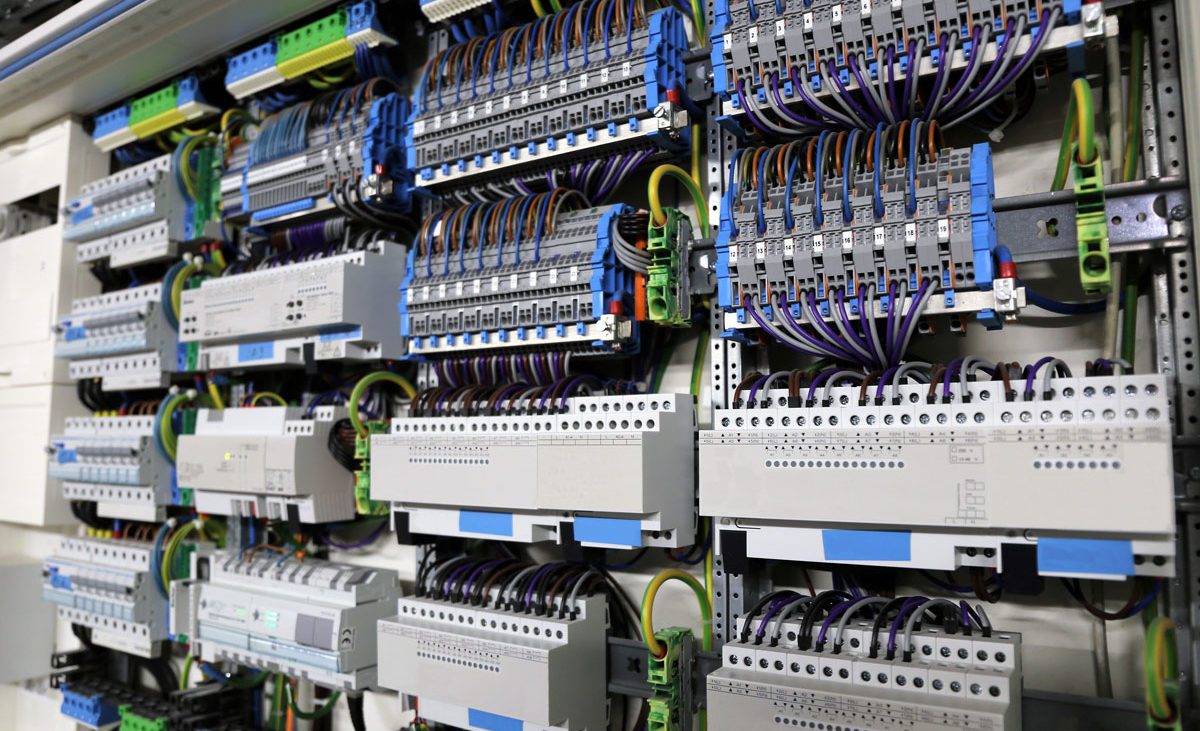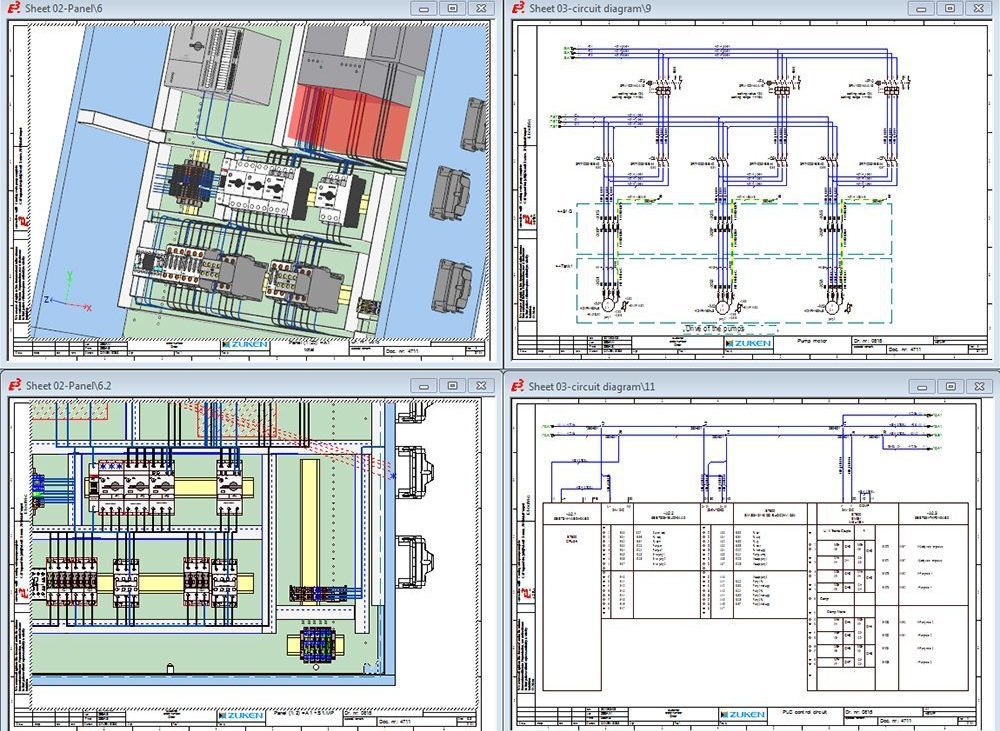Experienced Electrical Engineering Design Services Tailored to Unique Needs
Experienced Electrical Engineering Design Services Tailored to Unique Needs
Blog Article
Innovative Electric Design Solutions for Modern Infrastructure
The evolution of modern-day facilities necessitates innovative electric design solutions that not only enhance operational performance however also address sustainability difficulties. As metropolitan atmospheres grow significantly intricate, integrating technologies such as clever grids and renewable energy resources ends up being extremely important. These improvements not just guarantee to maximize energy intake however also foster resilience versus future needs. The landscape of electric design is going through rapid improvement, prompting a better exam of emerging fads and their implications for lasting infrastructure feasibility. What might the future hold for those that embrace these ingenious approaches?
Relevance of Innovative Electrical Design
Innovative electrical design plays a critical role in modern facilities, affecting not only efficiency but also sustainability. As cities develop and the need for power boosts, the requirement for sophisticated electric systems comes to be extremely important. These systems must not just fulfill existing needs yet additionally prepare for future development and technical innovations.
A well-executed electric design can substantially decrease energy intake, consequently reducing operational prices and lessening ecological impact. By including sustainable energy sources, such as photovoltaic panels and wind turbines, cutting-edge styles can enhance power self-reliance and resilience. Smart grid innovations enable for real-time surveillance and administration of energy distribution, maximizing performance and lowering waste.
Safety and security is one more vital aspect of electric design. Carrying out strenuous requirements and innovative technologies can minimize risks related to electric failures, ensuring a safe and secure environment for homeowners and companies alike. In addition, innovative styles promote adaptability, enabling frameworks to incorporate arising technologies flawlessly.
Key Patterns in Electric Design
As the landscape of electric design remains to progress, a number of vital fads are forming the future of the industry. One considerable pattern is the assimilation of smart technology into electrical systems. The spreading of the Internet of Things (IoT) has made it possible for real-time surveillance and control of electric tools, enhancing effectiveness and assisting in anticipating upkeep.
An additional fad is the expanding focus on modular design. This approach permits for scalable and flexible options, making it possible for framework to adjust to altering needs without extensive improvements. In addition, making use of advanced simulation devices and Building Info Modeling (BIM) is coming to be progressively widespread, streamlining the design process and boosting partnership among stakeholders.
Furthermore, advancements in materials science are causing the growth of lighter, a lot more sturdy, and energy-efficient components. This technology is specifically important for high-performance buildings and facilities projects.
Finally, there is a marked change towards data-driven decision-making - electrical design services. Leveraging data analytics helps designers maximize systems for performance and cost-effectiveness. Together, these trends signify a transformative period in electrical design, improving performance, sustainability, and strength in modern framework
Lasting Power Solutions
Sustainable power options are progressively coming to be a vital emphasis in electrical design, mirroring a wider commitment to ecological obligation and source performance. These services intend to reduce ecological impact while maximizing energy usage in numerous frameworks, from domestic structures to big business facilities.
Among the leading techniques entails the integration of renewable resource sources, such as solar panels and wind generators, into electrical systems. This not just reduces dependency on fossil gas yet also enhances power strength. Additionally, ingenious power storage space systems, such as advanced batteries, enable effective monitoring and circulation of energy, making sure that excess energy created throughout optimal manufacturing can be made use of during high demand durations.
In addition, energy-efficient design techniques are being adopted to improve overall system performance. This includes using energy-efficient illumination, cooling and heating systems, and wise building innovations that keep an eye on and adapt energy usage based on occupancy and environmental problems.
Smart Grid Technologies
The implementation of sustainable energy solutions naturally leads to the exploration of smart grid technologies, which play a critical role in modernizing electrical systems. Smart grids leverage advanced communication technologies and data analytics to enhance electrical load calculation the integrity, performance, and sustainability of electrical energy distribution. By integrating electronic modern technology with conventional grid facilities, these systems assist in real-time surveillance, automated control, and boosted decision-making abilities.
One of the crucial features of wise grids is their ability to accommodate renewable resource resources, such as solar and wind power. This adaptability not just minimizes reliance on fossil fuels yet additionally enables for a more decentralized power manufacturing model. Furthermore, clever grids allow demand feedback programs, where consumers can adjust their power usage based upon real-time prices, thereby advertising energy preservation and minimizing peak load needs.
Furthermore, smart grid modern technologies enhance grid strength by enabling quicker recognition and resolution of outages, inevitably minimizing downtime. With anticipating upkeep and analytics, utilities can enhance and optimize procedures solution shipment. As communities and cities remain to evolve, wise grid technologies are crucial for developing a efficient and sustainable electric framework that meets the demands of contemporary society.

Future-Proofing Framework
To ensure lasting practicality and adaptability, future-proofing facilities is important in the swiftly developing landscape of electric design solutions. As technology breakthroughs and energy needs shift, it is critical that electrical systems are designed with adaptability in mind. This involves incorporating scalable remedies that can fit future upgrades without necessitating considerable overhauls.

Additionally, sustainability has to be a keystone of future-proofed designs. Using eco-friendly energy resources, such as solar and wind, and maximizing energy efficiency minimize dependency on nonrenewable fuel sources, lining up with global initiatives to combat climate adjustment.
Verdict
By prioritizing sustainability, efficiency, and adaptability, these services address the advancing needs of energy systems. The integration of clever grid innovations and sustainable power solutions boosts strength and decreases operational expenses.
A well-executed electrical design can substantially minimize energy usage, thus decreasing functional costs and decreasing ecological impact. By including sustainable power resources, such as solar panels and wind turbines, ingenious designs can boost energy freedom and durability. In addition, ingenious energy storage space systems, such as innovative batteries, allow efficient administration and distribution of energy, ensuring that excess power generated during optimal production can be made use of during high need durations.
Smart grids make it possible for need response programs, where consumers can adjust their power use based on real-time pricing, consequently advertising power conservation and decreasing peak tons demands. (electrical load calculation)
As innovation breakthroughs and energy demands change, it is crucial that electric systems are created with flexibility in mind.
Report this page